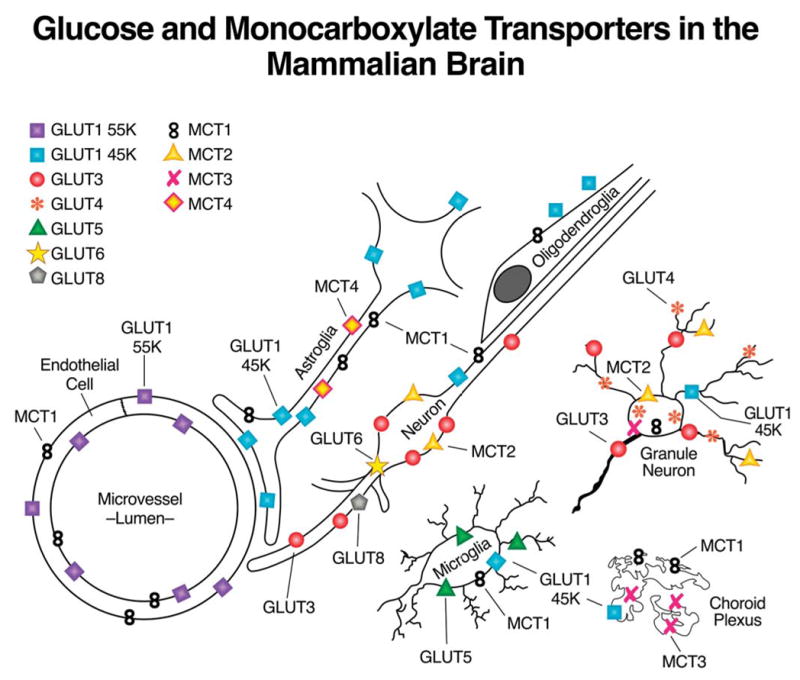GLUT
2022-05-02: reference:
Glucose Transporter #
-

- GLUT1: Main human GLUT, including in the brain.
- Possibly insulin-responsive in certain cell types
- GLUT2: Bidirectional. Mouse beta cells. High-frequency, low-affinity.
- GLUT3: High-affinity.
- Neurons, placenta.
- GLUT4: Regulated by insulin.
- Expressed in adipose tissue, skeletal muscle, cardiac muscle, neurons
- GLUT5
- GLUT8
- GLUT10
- GLUT12
- Possibly insulin-responsive
- GLUT13
- GLUT1: Main human GLUT, including in the brain.
-
Wikipedia: The central role of GLUT3 in cerebral metabolism has been challenged by the Astrocyte-neuron lactate shuttle (ANLS) hypothesis,[6] which proposes that Astrocytes play the key role in the coupling of neuronal activity and cerebral glucose utilization. In this hypothesis, the astrocyte, which relies on GLUT1 for glucose transport, is the primary consumer of glucose in the brain, providing lactate as the primary energetic fuel for neurons.
- However, by modeling the kinetic characteristics and glucose concentrations in neurons and glia, it was concluded that the glucose capacity of neurons via GLUT3 far exceeds that of astrocytes via GLUT1.[7] Additionally, demonstrations of increase in GLUT3 expression associated with increased cerebral glucose utilization provides further confirmation of the central role of GLUT3.[5]*